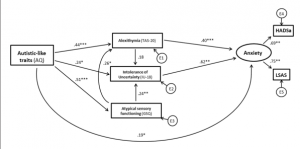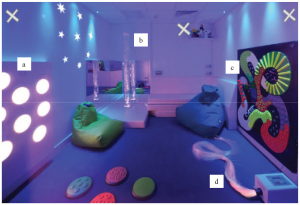Magda Mostafa, Marlene Sotelo, Toby Honsberger
Abstract
Purpose
The objective of this paper is to study the efficacy of the ASPECTSS Design Index’s concepts as drivers of design intervention for educational environments for students on the autism spectrum. Based on the seven principles of acoustics, spatial sequencing, escape spaces, compartmentalization, transitions, sensory zoning and safety, ASPECTSS formed the basis for a preliminary post-occupancy evaluation (POE) and survey of an existing school environment.
本文的目的是研究ASPECTSS设计指数概念作为孤独症谱系学生教育环境设计干预驱动因素的有效性。ASPECTSS基于声学、空间排序、逃避空间、区隔化、过渡、感觉分区和安全七项原则,形成了对现有学校环境进行初步使用后评价( POE )和调查的基础。
Design/methodology/approach
Concepts drawn from the review of other strategies for autism spectrum disorder (ASD) friendly design were integrated with the seven ASPECTSS principles to create a design framework and consequent design retro-fit for a Pre-K-12th grade public school for students on the autism spectrum. The following design interventions were proposed: colour-coding based navigation; acoustical treatments in key circulation spaces; introduction of transition alcoves; classroom reorganisation using compartmentalization principles and the introduction of escape spaces for de-escalation. Specifically, a classroom template of modules of ASPECTSS-compliant layouts was provided to all staff. The efficacy and impact of these interventions were assessed using a whole campus online staff survey with further probing using classroom observations and subsequent interviews.
从对孤独症谱系障碍( ASD )友好设计的其他策略的回顾中得出的概念,与ASPECTSS的七项原则相结合,为一所针对自闭症谱系障碍学生的学前K – 12年级公立学校创建设计框架和随后的设计改造。提出了以下设计干预措施:基于颜色编码的导航;关键循环空间的声学处理;过渡槽的介绍;利用区隔化原则进行课堂重组,并引入逃生空间进行降级。具体来说,为所有工作人员提供了符合ASPECTSS布局的模块的教室模板。这些干预措施的效果和影响是使用整个校园的在线状态进行评估的
Findings
The results show alignment between the implementation of the ASPECTSS informed design interventions and responses to nine of the Likert scale items were all significantly lower than the middle response, indicating a high degree of satisfaction from survey respondents. These questions and responses related to the colour scheme facilitating ease of navigation for visitors of the school, the acoustics of the building successfully mitigating sound magnification and subsequently student distractibility, the organisation of the classrooms enhancing learning and the de-escalation zones allowing improved management of disruptive behaviours in the classroom.
结果表明,ASPECTSS知情设计干预措施的实施与李克特量表中9个项目的反应之间的一致性均显著低于中间反应,表明调查对象的满意度较高。这些问题和反应与色彩方案有关,便于学校游客的导航,建筑物的声学成功地减轻了声音放大和随后的学生分心,教室的组织增强了学习和降级区,从而改善了对教室中破坏性行为的管理。
Research limitations/implications
This study focuses primarily on the Autism ASPECTSS Design Index as a framework for assessing classroom efficacy. Other tools and frameworks may produce different insights. A single school site was studied. Validation of these findings in other school environments is necessary before generalising these strategies at scale. The use of qualitative tools, primarily teacher and staff surveys, provides one lens into the efficacy of these design strategies. Further research using measurable biometric indicators such as heart-rate and stress levels measured through wearable technology could provide a first step towards the triangulation of these findings
本研究主要关注作为评估课堂效能感框架的孤独症ASPECTSS设计指数。其他的工具和框架可能会产生不同的见解。对单个学校场地进行了研究。在对这些策略进行规模推广之前,有必要在其他学校环境中验证这些发现。定性工具的使用,主要是教师和员工调查,为这些设计策略的有效性提供了一个视角。通过可穿戴技术测量的心率和压力水平等可测量的生物特征指标的进一步研究可以为这些发现的三角化提供第一步。
Practical implications
These findings could help provide more standardised best practices for designing learning environments for autism, potentially providing supportive strategies with real impact on learning quality, skill development and knowledge acquisition in school environments. This could potentially have economic implications by supporting more efficient progress for autistic students through their school curriculum.
这些发现有助于为孤独症学习环境的设计提供更标准化的最佳实践,并可能为学校环境中的学习质量、技能发展和知识获取提供具有实际影响的支持性策略。这可能会产生潜在的经济影响,通过学校课程支持孤独症学生更有效的进步。
Social implications
Similar to economic impact, if validated and generalised, these findings could help with sense of accomplishment, general mental health improvement, alleviation of family stress and potential reduction of stigma in the autism community.
与经济影响类似,如果得到验证和推广,这些发现可能有助于孤独症社区的成就感、一般心理健康的改善、家庭压力的减轻和污名的潜在减少。
Originality/value
There is a slowly emerging field of design guidance for autism schools, but very little empirical evidence on the measurable efficacy of these strategies. This research provides one type of such evidence, as measured by the perceived impact from the point of view of staff and teachers at the school. Keywords Universal design, Autism, Inclusive design, School design.
针对孤独症学校的设计指导领域正在慢慢兴起,但关于这些策略的可测量功效的经验证据非常少。本研究提供了一种类型的证据,即从学校工作人员和教师的角度衡量的感知影响。关键词通用设计、孤独症、包容性设计、学校设计
图1:映射了ASPECTSS,其他孤独症设计文献和WELL建筑标准的舒适标准之间的建筑概念和标准的一致性,显示了这些工具之间概念的重叠和差距
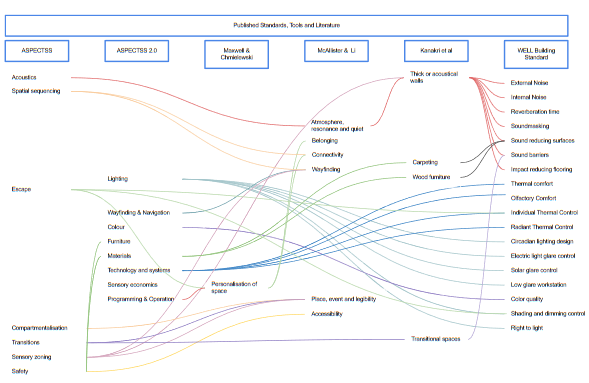
图2:过渡凹室
用于在教室中从高刺激活动转向低刺激、高注意力活动时进行感官调节,反之亦然。在安装之后,他们被用作学生要求的奖励时间,以支持正强化
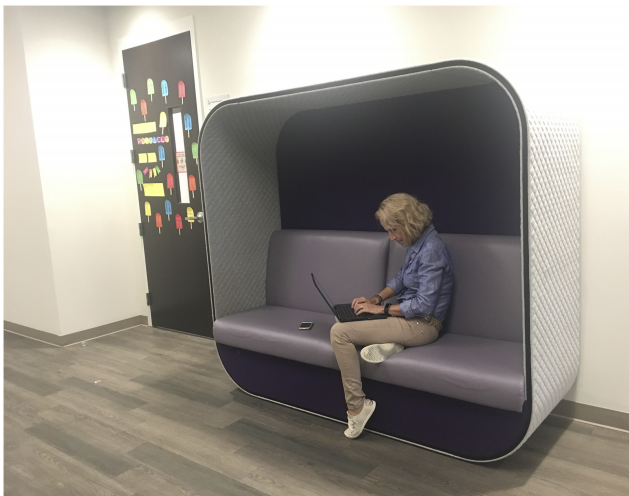
图3:符合ASPECTSS标准的教室布局图(小组活动区)
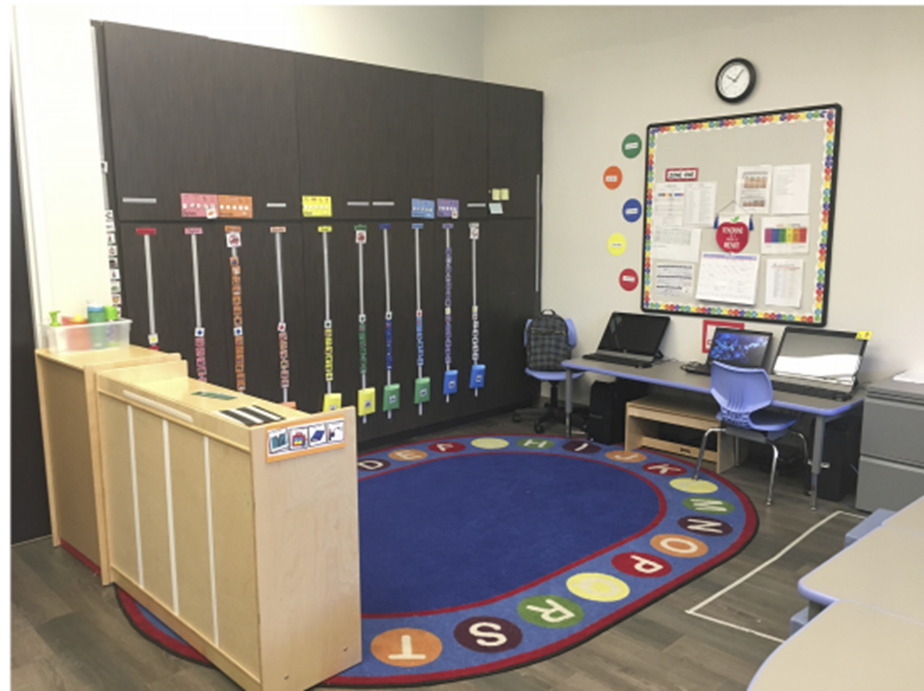
图4:个人工作台空间
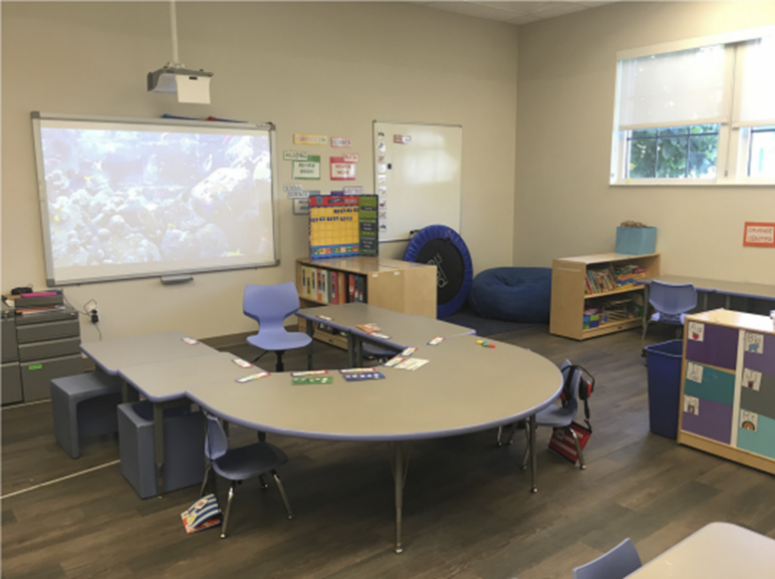
图5:全景图







